Best of India Tours
- Golden Triangle Tour- Best of India & Nepal
- Classical Rajasthan
India Cultural Tours
- Images of North India- Karnataka Heritage
- Rajasthan & Goa Tour
Discover India Tours
- Grand India Tour- North to South India
- Central to South India
Rajasthan Tours
- Classical Rajasthan Tour- Golden Triangle Tour
- Grand Mughal Tour
India Luxury Trains
- Palace on Wheels- The Golden Chariot
- India Deccan Odyssey
- The Indian Maharaja
- Royal Rajasthan on Wheels
Nepal Tours
- Glimpses of Nepal- Buddhist Pilgrimage
- Nepal River Rafting
- Destinations of Nepal
- Nepal General Info
India Wildlife Tours
- North India Wild Life- South India Wildlife
Tibet Tours
- Tibet Monastery Tours- Explore Tibet
- Destinations of Tibet
Spa & Yoga Tours
- Ananda in Himalayas- Yoga & Meditation
Adventure Tours
- Manali Safari Tour- Himalayan Trekking
- Horse Safari
Orissa
Bhubhaneshwar
![]() Chitrakoot
Chitrakoot
![]() Gopalpur on Sea
Gopalpur on Sea
![]() Puri
Puri
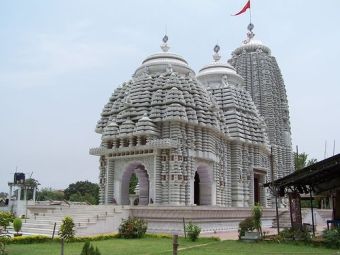
Orissa has a chequered history which has successfully assimilated and synthesized the best of Buddhist, Jain and Hindu cultures. Orissa or Kalinga as it was then called was a settlement of non-Aryan and Aryan settlers. It was here that the famous Battle of Kalinga was fought which made King Ashoka forsake war. He became a follower of Buddhism and spread the spirit of ahimsa and peace. It is to the Kharavela period that Orissa owes its Jain art and architectural tradition. The sophisticated architectural style of the Jain Monastic caves at Udaygiri and Khandagiri are a story unto themselves.
To understand all that a Hindu temple stands for one must realize that temples in India are not merely abodes of deities but a shradhanjali (offering) to the most sacred. Here a ’darshan’ is a communion between man and his creator. Hence, Orissan temples are characterized byprofuse decorations, exquisite carving and ornamentation covering the entire visible area with Gods & Goddesses, kings and queens, animals and flower motifs ranged against each other. They radiate the artist’s inner love and dedication. Orissa is probably the only state where one can study temple architecture in all its successive stages of development.
Enchanting Odissi
Odissi, is the traditional dance form of Orissa and probably owes its origin to the temple dances of the devadasis (temple dancers). Possibly the oldest classical dance form, one must sit through a performance to experience its sheer lyrical grace. Mentioned in inscriptions, it is depicted on sculptures, in temples like the Brahmeswara and the dancing hall of the Sun temple at Konark. In fact in the 1950’s the entire Odissi dance form was revitalized with the help of the Abhinaya Chandrika and sculpted dance poses found in temples. Orissa enjoys a rich tradition of tribal and folk dances as well. Chhau from Mayurbhanj District is a martial dance form reminiscent of Orissa’s earlier maritime tradition. Other folk and tribal dances include Danda Nata, a daylong performance ending in acrobatic sequences, Ranapa or dances in which dancers perform balancing acts on bamboo stilts.
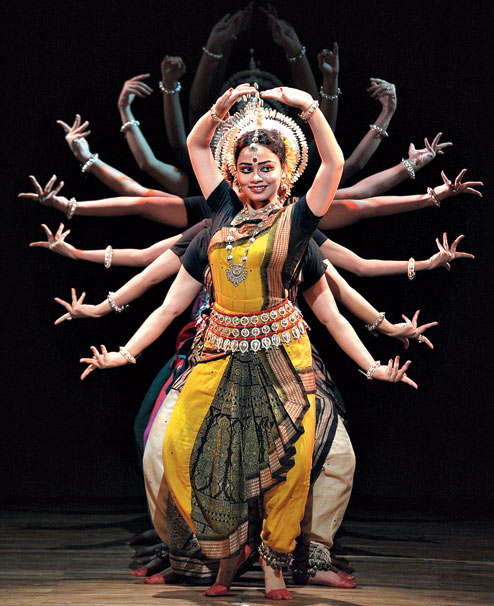
Rare Artistry
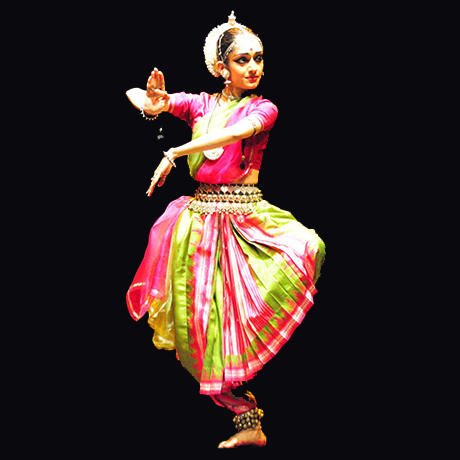
Land of dexterous artists and craftsmen, Orissa possesses a rich artistic tradition which enjoyed liberal patronage from the temples as well as the nobility. Diverse and varied, the craftsmen artists of Orissa still retain their indigenousness, trying to refine it to suit a changing sensibility. Be it the appliqué artists of Pipli or the stone carvers of Orissa, proud descendants of sculptors whose hands chiseled the unsurpassable designs on Orissa’s famous temples, the essential conflict between the traditional and the modern is gradually being resolved. The progressive attitudes of the Orissan artists coupled with hereditary skills zealously perpetuated, has given traditional Orissan arts and crafts like weaving of Ikat, Bomkai and
Sambalpuri Saris, stone carving, appliqué and embroidery, silver filigree work, patta painting and palm leaf engraving, brass and bell metal work, lacquered boxes and toys and basket weaving, a unique place in the connoisseur’s dictionary the world over. A visit to the Raghurajpur artists village and Pipli, near Puri, to see the artists at work is quite a rewarding experience.
Gourmet Delights
The green coconut with its pure water and the abundant sea food from Chilika lake and the sea are as Orissan as pizzas are Italian. Delicious prawns, crabs, sweet water fish, lamb, chicken and eggs cooked by Orissan cooks are widely available gourmet fares, while specialty restaurants serve almost everything. Milk preparations like Rasgulla, Rasmalai, Khirmohan, Rasabali, Kalakand are delicious. Pithas, sweet and savoury are served as local snacks. This is a traditional preparation requiring skill and care. Pithas like Mandas, Kakara, Chhunchipatra are usually domestic preparations much loved by the Orissans.
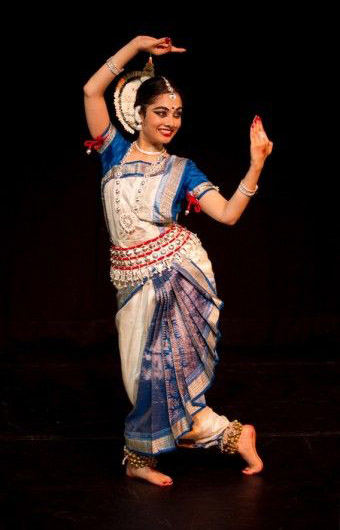
The Ethnic World of Orissa
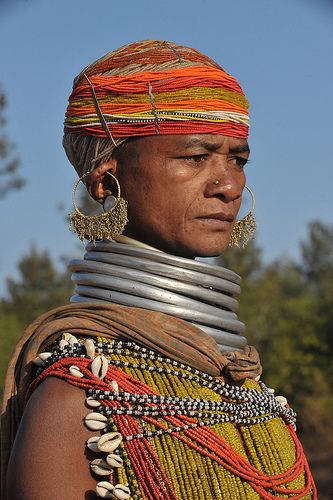
Orissa is a modern state with an ethnic past that is still vibrant. Most of her tribes are to be found in the districts of Mayurbhanj, Keonjhar Phulbani, Sambalpur, Kalahandi and Koraput. As many as 62 tribes exist in Orissa - Kondhs, Koyas, Bondas, Gadabas, Santals, Juangs, Oraon, to name only a few are some important tribes who have retained their individuality and their close bond with nature. From the last week of January to early February, the Tribal Fair at Bhubaneshwar brings together the ethnic world; their art, craft and culture is on display. For those desirous of a closer look trips are arranged by many tour operators from Bhubaneshwar and other cities but it is a hardier trail and more time consuming.
Bhubaneshwar
Bhubaneshwar is the temple city of the east. The ancient city of Bhubaneshwar (Bhuban being world and Iswar God) is a walk down centuries of temple architecture. It is probably the only city in the world that enables an authentic over-view of the stages of development of Hindu religious architecture. In the fast moving world of today these temples are a gentle reminder of the splendor, the heritage that was once India. Regular dances by the ’Devadasis’ or divine servant girls, rituals and rites, recital of hymns were all an integral part of temple.
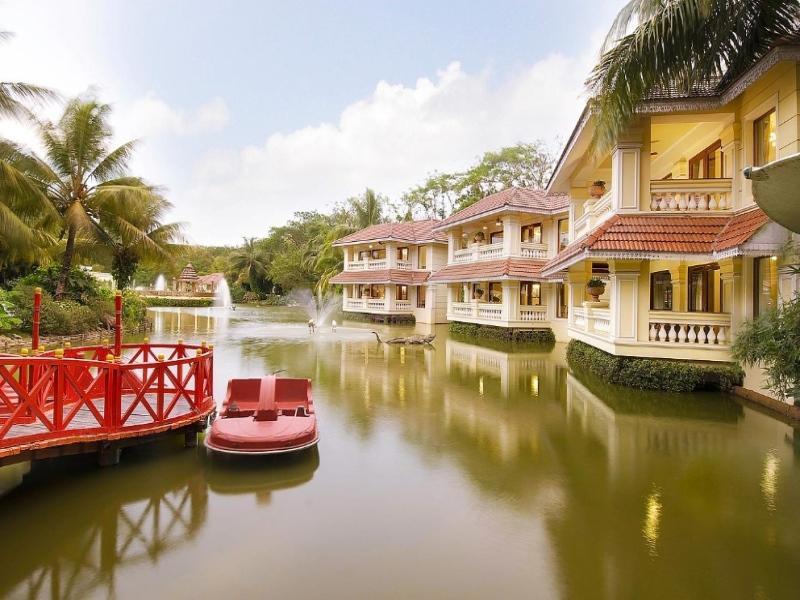
 Area:65.03 sq km.
Area:65.03 sq km.
 Altitude:45 meters (146 ft.)
Altitude:45 meters (146 ft.)
 Climate:(deg C): Summer - Max.38, Min.27.1. Winter - Max.28.2, Min.15.2.
Climate:(deg C): Summer - Max.38, Min.27.1. Winter - Max.28.2, Min.15.2.
 Rainfall:Mid June-September 60 inches (152 cms)
Rainfall:Mid June-September 60 inches (152 cms)
 Languages Spoken: Oriya, Bengali, Hindi, English
Languages Spoken: Oriya, Bengali, Hindi, English
 Best Season:October to March
Best Season:October to March
Excursions:
 By Air:Connected with Bombay, Calcutta, Delhi, Hyderabad, Nagpur, Varanasi, Raipur and Vishakhapatnam.
By Air:Connected with Bombay, Calcutta, Delhi, Hyderabad, Nagpur, Varanasi, Raipur and Vishakhapatnam.
 By Rail:Directly connected with Calcutta, Puri, Madras, Delhi, Bombay, Bangalore, Guwahati, Hyderabad, Tirupati, Trivandrum.
By Rail:Directly connected with Calcutta, Puri, Madras, Delhi, Bombay, Bangalore, Guwahati, Hyderabad, Tirupati, Trivandrum.
 By Road:Calcutta- 480 kms, Chilka Lake (Barkul)- 130 kms, Cuttack- 32 kms, Gopalpur- 184 kms, Konark- 64 kms, Madras- 1225 kms, Puri- 62 kms.
By Road:Calcutta- 480 kms, Chilka Lake (Barkul)- 130 kms, Cuttack- 32 kms, Gopalpur- 184 kms, Konark- 64 kms, Madras- 1225 kms, Puri- 62 kms.
Udaygiri Khandagiri
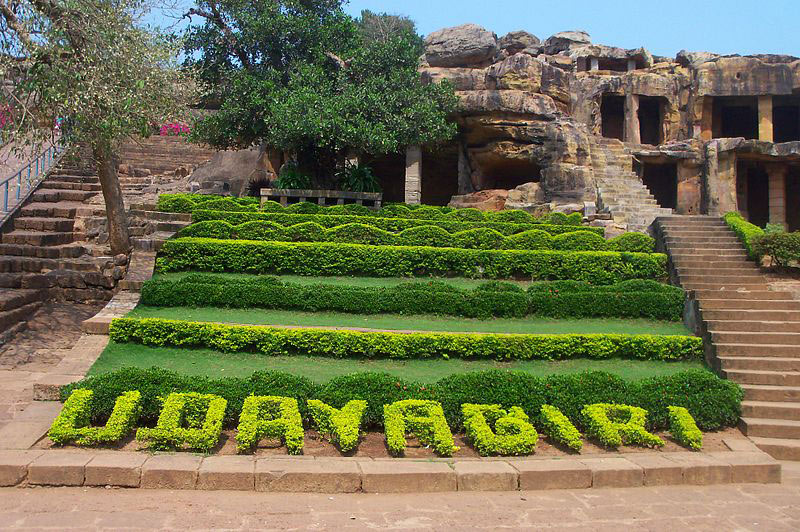
7 kms from Bhubaneshwar are the twin hills of Udaygiri and Khandagiri. Built by Kharavela around 1st - 2nd Century BC for Jain monks, they are excellent examples of Jain Cave art. The famous caves of Hathigumpha (elephant cave) in Udaygiri, RaniGumpha (Queen’s cave) also in Udaygiri, with upper and lower stories, spacious courtyards and extremely delicately designed friezes bear witness to the sophistication the architectural styles had attained as early as the first Century BC.
Dhauli
The seat of Lord Jagannath, Site of Renowned Rathyatra Festival and one of the most popular sea side resorts on the Bay of Bengal, Puri is an ideal travel destination all the year round.
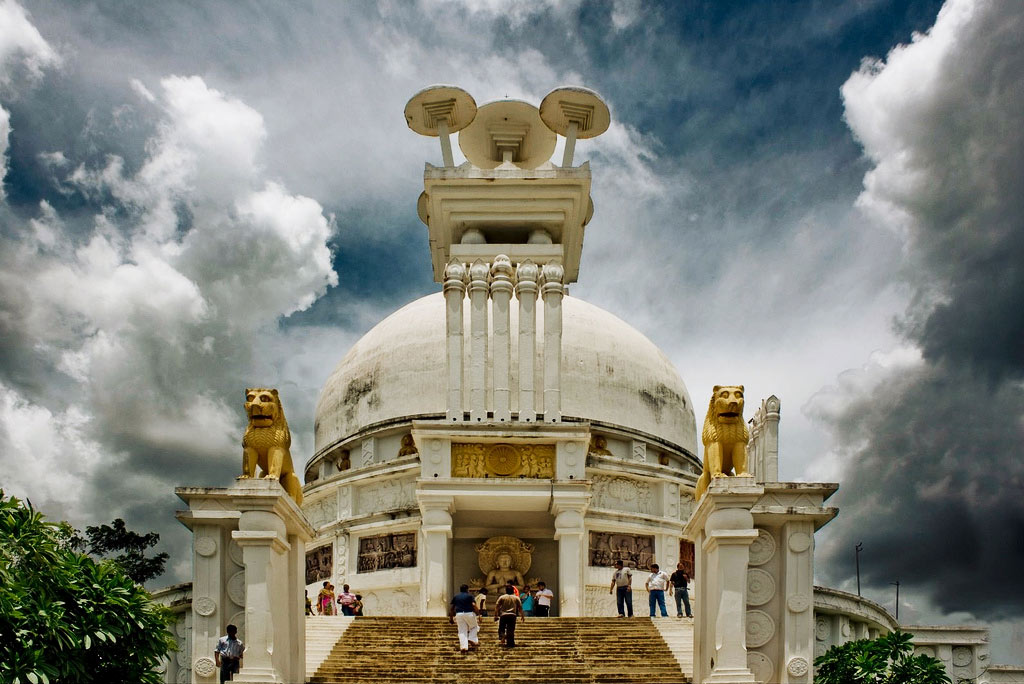
Puri
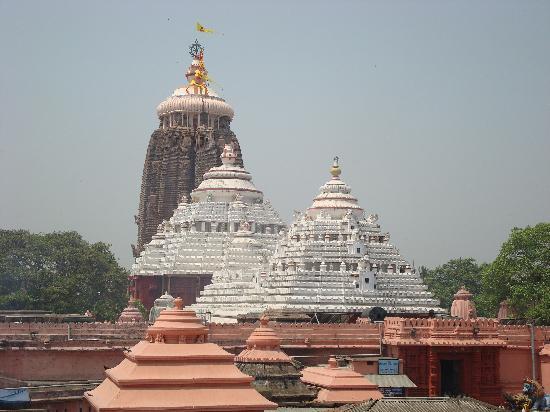
The seat of Lord Jagannath, Site of Renowned Rathyatra Festival and one of the most popular sea side resorts on the Bay of Bengal, Puri is an ideal travel destination all the year round.
 By Air:The Nearest Airport is Bhubaneswar- 65 kms.
By Air:The Nearest Airport is Bhubaneswar- 65 kms.
 By Rail:Well connected to Berhampore (Orissa), Bhubaneswar, Calcutta, Cochin, Delhi, Guwahati, Hyderabad, Madras, Tirupati, Trivandrum, Varanasi.
By Rail:Well connected to Berhampore (Orissa), Bhubaneswar, Calcutta, Cochin, Delhi, Guwahati, Hyderabad, Madras, Tirupati, Trivandrum, Varanasi.
 By Road:Bhubaneshwar- 62 kms, Calcutta- 541 kms, Chilika- 167 kms, Konark- 31 kms, Madras- 1285 kms, Sambalpur- 362 kms, Vishakhapatnam- 486 kms.
By Road:Bhubaneshwar- 62 kms, Calcutta- 541 kms, Chilika- 167 kms, Konark- 31 kms, Madras- 1285 kms, Sambalpur- 362 kms, Vishakhapatnam- 486 kms.
Konark
Renowned for its magnificent sun temple, Konark is also a lovely beach resort. In Konark, the "Natya Mandir", the dance hall of the Sun Temple probably remains as the last remnant of the glorious temples of Orissa an extant example of the architectural excellence of the times. Built in the 13th Century, here a colossal image of the chariot of the Sun, drawn by seven horses and 24 wheels symbolizes the divisions of time. The Konark Sun Temple also houses a Natamandira or dancing hall. Only two subsidiary temples out of the 22 exist today. The Vaishnadevi Mayadevi Temple stand to the West it.
The Sun temple of Narasimhadeva is a depiction in stone of the life of those times – royal, social, religious and military. The intricate carvings on the walls and wheels of the chariot are unprecedented in history.
 Area:2.5 sq km.
Area:2.5 sq km.
 Altitude:Sea level.
Altitude:Sea level.
 Climate:(deg C): Summer- Max. 43, Min. 32.2. Winter- 26.7, Min. 10.6.
Climate:(deg C): Summer- Max. 43, Min. 32.2. Winter- 26.7, Min. 10.6.
 Rainfall:152.4 cms (July to September).
Rainfall:152.4 cms (July to September).
 Languages Spoken: Oriya, Bengali, Hindi, English.
Languages Spoken: Oriya, Bengali, Hindi, English.
 Clothing: Summer- Light tropical & cottons, Winter- light woolens.
Clothing: Summer- Light tropical & cottons, Winter- light woolens.
 Best Season:Throughout the year, but preferably October to March.
Best Season:Throughout the year, but preferably October to March.
How To Reach -
 By Air: Nearest airport Bhubaneshwar- 64 kms is connected with Calcutta, Delhi, Hyderabad, Madras and Nagpur.
By Air: Nearest airport Bhubaneshwar- 64 kms is connected with Calcutta, Delhi, Hyderabad, Madras and Nagpur.
 By Rail:Nearest railheads Puri- 31 kms and Bhubaneshwar- 64 kms are connected with the major places.
By Rail:Nearest railheads Puri- 31 kms and Bhubaneshwar- 64 kms are connected with the major places.
 By Road:Konark is well-connected with Bhubaneshwar as well as the major places.
By Road:Konark is well-connected with Bhubaneshwar as well as the major places.
Chilka Lake
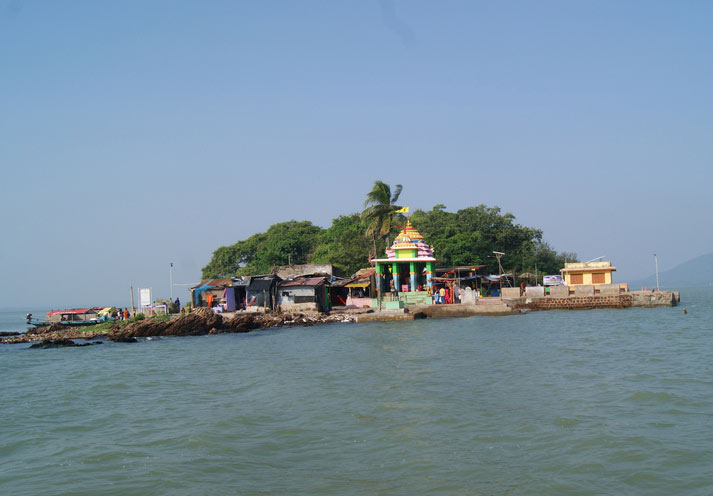
Chilika Lake, spreading over an area of 1100 sq. kms is the largest brackish water lake in the country and attracts large number of migratory birds besides resident ones. Barkul and Rambha are two places on the lake which serve as the base. Though the lake can be visited throughout the year, October to March is the best season.
Flora:
The lake harbours the "aquatic vegetation" of its own and is typically represents by Algal forms, a number of Diatoms/Phytoplanktons and a few species of brackish water submerged phanerogams like Potamogeton pectinatus, Halophila ovalis etc. The present scanty littoral and scrub jungles on lake margin, islands and rocky faces are represented by the species like Salvadora presica and a number of climbers and herbaceous ground flora. The dunes & sandy areas of the beaches near lake have the floral composition of their own, favoured in the conditions they offer. The land lying between Sea and Lagoon exhibits rich growth of casuarinas equisetifolia.
Fauna:
There is a wide variety of animal life forms representing various groups of Animal Kingdom ranging from Protozoa to Mammals. Around 158 species of fishes and prawns have so far been recorded.Some mammals reported from small pockets in the surrounding hills/forests/scattered islands & amidst the vegetation of sandy ridge facing Chilika and Sea include Black bucks (Antelope cervicara), Spotted deer, Fox, Jackal, Hyena, Jungle Cat, Hare, Rat, Pachyura (an insectivora) etc.
 Area:1100 sq. kms. ( Wildlife Sanctuary area- 15.53 sq. kms.)
Area:1100 sq. kms. ( Wildlife Sanctuary area- 15.53 sq. kms.)
 Climate:(deg C): Summer- Max. 37, Min. 30. Winter- Max. 24, Min. 17.
Climate:(deg C): Summer- Max. 37, Min. 30. Winter- Max. 24, Min. 17.
 Rainfall:1160 mms. (Mainly July to September).
Rainfall:1160 mms. (Mainly July to September).
 Languages Spoken: Oriya, Bengali, Hindi, English.
Languages Spoken: Oriya, Bengali, Hindi, English.
 Clothing: Tropical.
Clothing: Tropical.
 Best Season:Throughout the year.
Best Season:Throughout the year.
Places Of Interest:
Satpada towards the South Eastern stretch of the lake is closer to puri and is fast developing as a tourist spot on the shore of Chilika.
To visit various islands, particularly, Kalijai & Nalabana as well as to cruise on the Chilika Lake, motorised Yatch and speed boat services are available at fixed rates from the Manager, O.T.D.C., Panthniwas, Barkul.
Excursions: By Air:Nearest airport Bhubaneshwar is 105 kms from Barkul & 135 kms from Rambha.
By Air:Nearest airport Bhubaneshwar is 105 kms from Barkul & 135 kms from Rambha.
 By Rail:The nearest railheads are at Balugaon- 7 kms from Barkul and Rambha which are directly connected to Calcutta, Puri, Madras, Hyderabad and Bombay.
By Rail:The nearest railheads are at Balugaon- 7 kms from Barkul and Rambha which are directly connected to Calcutta, Puri, Madras, Hyderabad and Bombay.
 By Road:Barkul to Bhubaneshwar- 105 kms, Puri- 167 kms, Cuttack- 133 kms, Berhampur- 78 kms, Gopalpur-on-Sea- 75 kms and Rambha- 30 kms.
By Road:Barkul to Bhubaneshwar- 105 kms, Puri- 167 kms, Cuttack- 133 kms, Berhampur- 78 kms, Gopalpur-on-Sea- 75 kms and Rambha- 30 kms.
Gopalpur
Gopalpur-on-Sea is a quiet and charming sea resort along the Bay of Bengal, in the district of Ganjam, Orissa. It offers secluded environment and magnificent sun, surf and sand for most of the year.
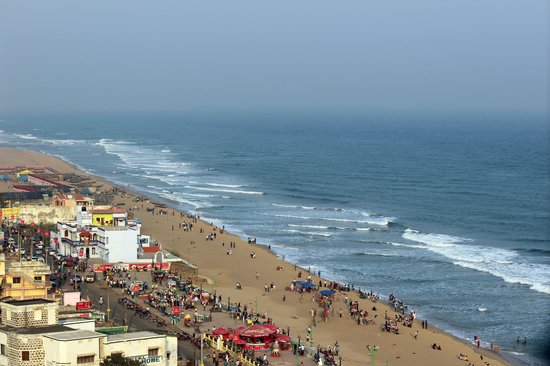
 Altitude:Sea level.
Altitude:Sea level.
 Climate:(deg C): Summer- Max. 35, Min. 23. Winter- Max. 27, Min. 16. Rainfall: 118.7 cms (46.7 inches).S
Climate:(deg C): Summer- Max. 35, Min. 23. Winter- Max. 27, Min. 16. Rainfall: 118.7 cms (46.7 inches).S
 Languages Spoken: Oriya, Hindi, English.
Languages Spoken: Oriya, Hindi, English.
 Best Season:Throughout the year, preferably October to April.
Best Season:Throughout the year, preferably October to April.
Places Of Interest:
Gopalpur is situated right on the Bay of Bengal with a beautiful sea-beach.
Excursions:
 By Air:Bhubaneshwar is the nearest airport- 180 kms.
By Air:Bhubaneshwar is the nearest airport- 180 kms.
 By Rail:Berhampur- 16 kms is the nearest railhead.
By Rail:Berhampur- 16 kms is the nearest railhead.
 By Road: Barkul- 75 kms, Berhampur- 16 kms, Bhubaneshwar- 180 kms, Puri- 242 kms.
By Road: Barkul- 75 kms, Berhampur- 16 kms, Bhubaneshwar- 180 kms, Puri- 242 kms.
Simplipal
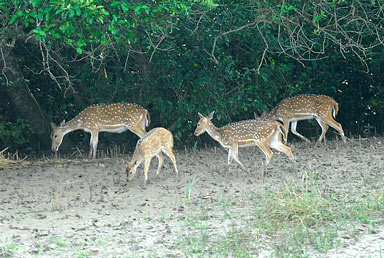
Nestled in the centre of Mayurbhanj, the northernmost district of Orissa is the Similipal National Park one of India's better known wild life sanctuaries, covering a large forested area of 2750 sq.kms. The variation in topography, climate and vegetation has supported large varieties of animals, birds and reptiles. Similipal is one of the earliest and finest of India's fifteen Tiger reserves under Project Tiger.
 Area:2750 sq km
Area:2750 sq km
 Altitude:559.31 meters above sea level
Altitude:559.31 meters above sea level
 Climate:(Deg C): Summer- Max.40, Min.20. Winter- Max.20, Min.4.4.
Climate:(Deg C): Summer- Max.40, Min.20. Winter- Max.20, Min.4.4.
 Rainfall:1648 mm ( Mid. June to Mid. September ).
Rainfall:1648 mm ( Mid. June to Mid. September ).
 Best Season:1st November to 15th June. December to February is extremely cold. (The reserve remains open from 15th Oct. to 15th June).
br>
Best Season:1st November to 15th June. December to February is extremely cold. (The reserve remains open from 15th Oct. to 15th June).
br>
Places Of Interest:
 By Air: Nearest airports are Calcutta- 250 kms and Bhubaneshwar- 300 kms.
By Air: Nearest airports are Calcutta- 250 kms and Bhubaneshwar- 300 kms.
 By Rail:Balasore- 76 kms from Lulung. Jamshedpur- 115 kms from Jashipur.
By Rail:Balasore- 76 kms from Lulung. Jamshedpur- 115 kms from Jashipur.
 By Road:Baripada- 20 kms, Jashipur- 114 kms, Bhubaneshwar- 320 kms, Calcutta- 250 kms from Lulung.
By Road:Baripada- 20 kms, Jashipur- 114 kms, Bhubaneshwar- 320 kms, Calcutta- 250 kms from Lulung.
Chandipur
Chandipur- 16 kms away from Balasore Railway Station on Howrah-Madras line of South Eastern ( S.E.) Railways annique beach where the sea water recedes about 5 kms during low-tide and advances to the shore line again during high-tides each day. An ideal beach resort of Orissa.
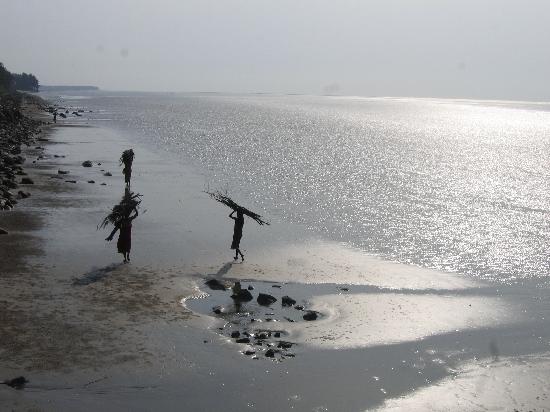
How To Reach -
 By Air:The nearest Airport is Bhubaneshwar- 230 kms from Chandipur.
By Air:The nearest Airport is Bhubaneshwar- 230 kms from Chandipur.
 By Rail:The nearest railhead Balasore- 16 kms.
By Rail:The nearest railhead Balasore- 16 kms.
 By Road:Balasore- 16 kms, Bhubaneshwar- 230 kms, Cuttack- 230 kms, Calcutta- 240 kms.
By Road:Balasore- 16 kms, Bhubaneshwar- 230 kms, Cuttack- 230 kms, Calcutta- 240 kms.
-
Delhi - Bhubhaneshwar - Puri - Kolkata - Darjeeling - Gangtok - Kalimpong - Delhi
 Duration:(11 Days)
Duration:(11 Days)





 Dhauligiri- 8 kms
Dhauligiri- 8 kms